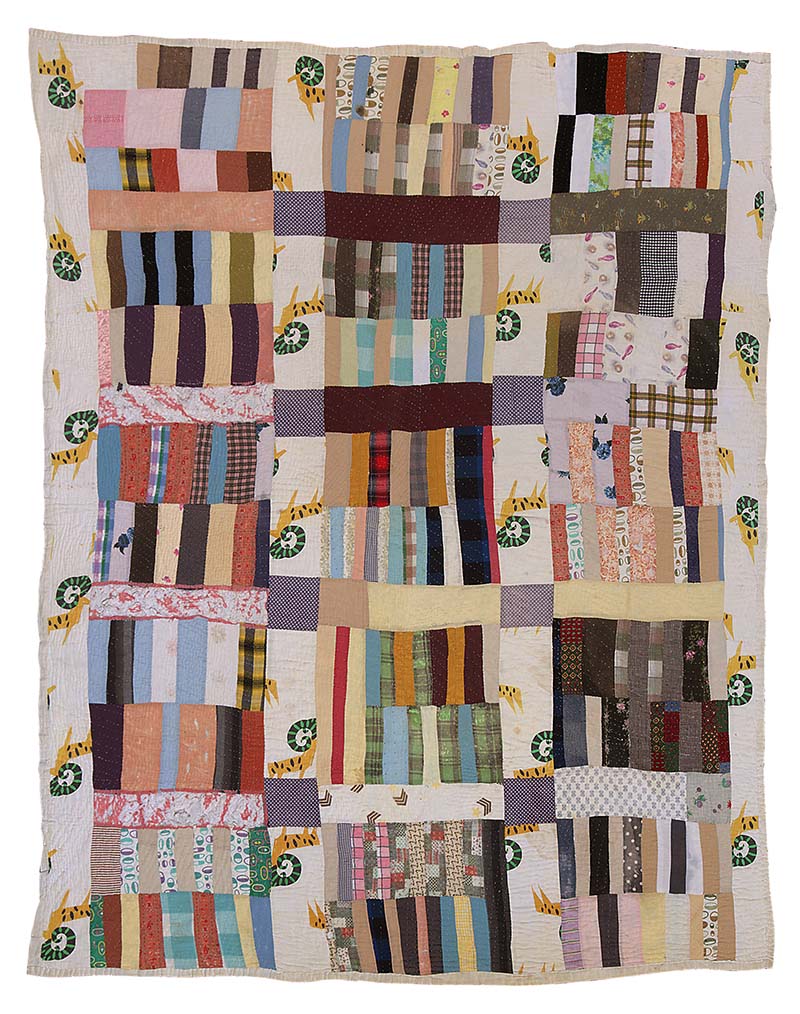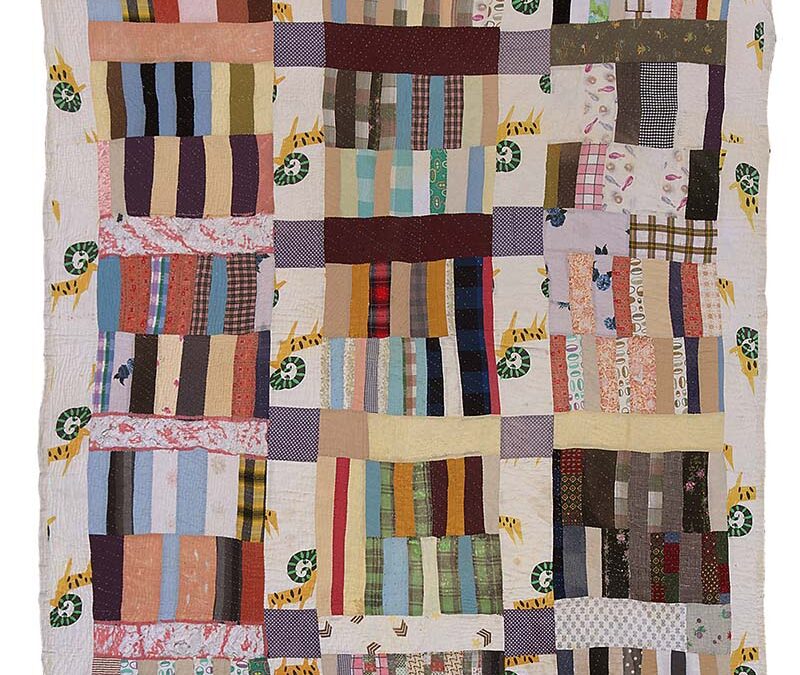
| Maker | Nettie Young (American, 1916–2010) |
| Date of Creation | 1928 |
| Location | Gee’s Bend, Alabama |
| Materials | Cotton and corduroy |
| Institution | New Orleans Museum of Art |
| Credit Line | Museum purchase and gift of the Souls Grown Deep Foundation from the William S. Arnett Collection |
| Accession Number | 2017.167 |
| Photo Credit | © Estate of Nettie Young / Artists Rights Society (ARS), New York. Image: Stephen Pitkin/Pitkin Studio / Art Resource, NY |
Within the remote community of Gee’s Bend, AL, generations of Black women have produced patchwork quilts that elevated the traditional craft form to internationally recognized masterpieces of American art. Bound by geographic isolation and interconnected kinship networks, the women of Gee’s Bend continue to experiment with bold geometric shapes and a fiercely independent design process. The art form of quilting has been in the United States since the 17th century. Quilts address a practical need—keeping bodies warm–but also are created individually or together in a community to celebrate life milestones and convey generational memories. Beginning in the early 1800s, women enslaved in Gee’s Bend pieced scrap cloth together, making utilitarian bed covers. Their unique design tradition developed, unbroken, as it passed through daughters and granddaughters, through the eras of tenement farms, the Great Depression, a changing agricultural economy, and the Civil Rights Movement. Today the patchwork quilts of Gee’s Bend women are celebrated as Modern art expressions in color and abstraction. Nettie Young’s “Stacked Bricks” quilt was made in 1928 when the artist was only 11 years old, assembled with textile prints including big horned sheep and bowling pins. Young recalled that she learned how to piece a quilt by imitating her mother’s work using scraps of cloth. In oral histories, many of the Gee’s Bend quilters recall learning the area’s unique quilting style this way; young women were encouraged to create their own designs rather than follow established patterns. This quilting tradition is likened to jazz music for its celebration of skilled improvisation. Gee’s Bend quilts were born from resourcefulness with fabric salvaged from worn-out clothes and feed sacks, but in the hands of generations of Black women, everyday materials evolved into marvels of individual creativity that charted a community’s hardships and triumphs.

